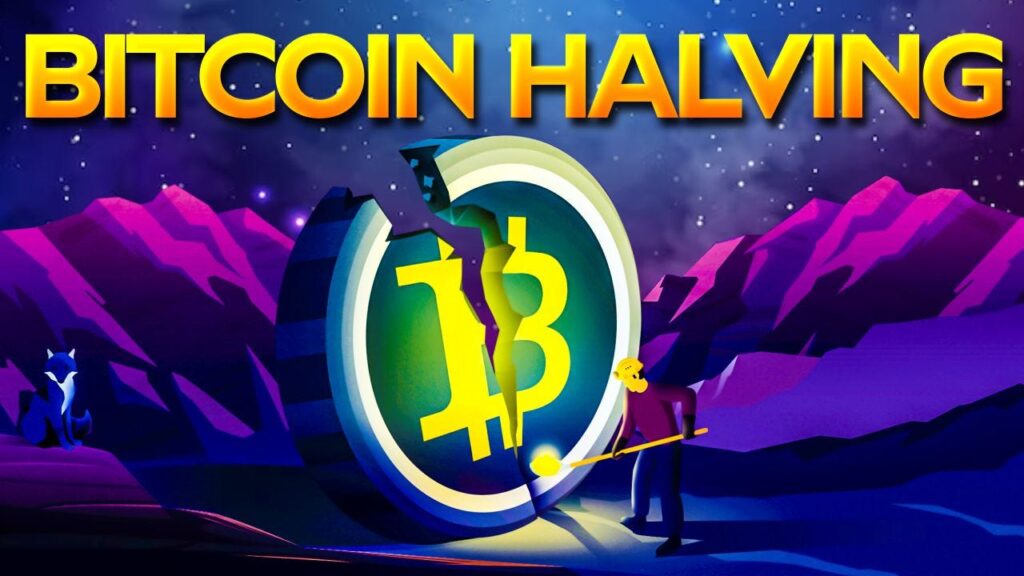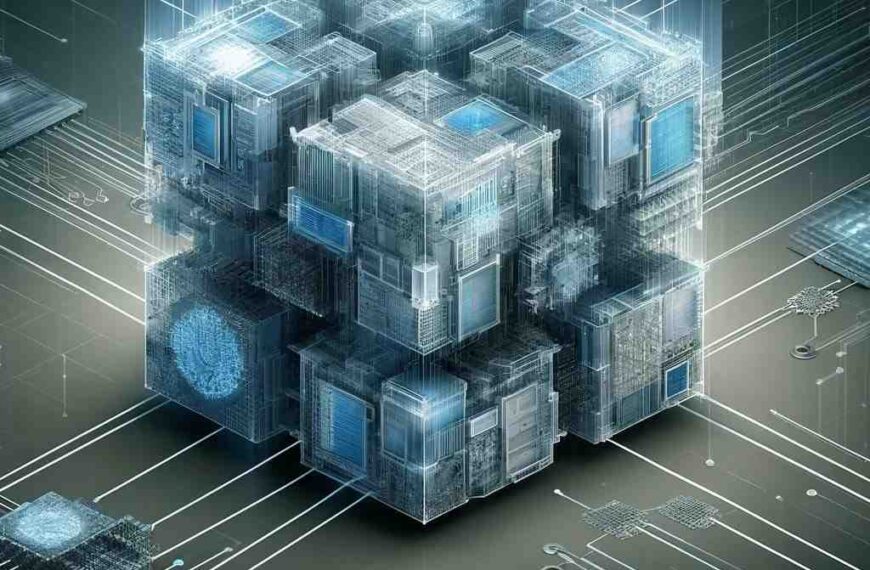
In this article, we will take a closer look at what Bitcoin halving is. We will verify the theory of Bitcoin price growth after the three previous halvings and speculate on Bitcoin price development after the next one.
The halving is already around the corner, and if you have or are planning any crypto exchanges, it may concern you more than you think. It will affect the entire cryptocurrency sector!
One of the key features of Bitcoin is its limited quantity. This feature, according to many analysts and investors, predisposes Bitcoin to one day becoming the world’s most important asset (and possibly the world’s reserve currency in time).
First of all, we will please readers who want simple and short answers:
Halving Bitcoin is, simply put, the reduction of the reward for miners (validators of Bitcoin transactions) by half . After a halving, miners receive half the number of coins for the same work = creating new blocks (and verifying transactions on the blockchain ). The mined Bitcoins can then be put on the market. Thanks to the decreasing supply over time and the growing interest in using Bitcoin, there is speculation about a significant increase in its price.
For those of you for whom this answer is not enough and would like to learn more, we have prepared a detailed article. Let’s see together why Bitcoin was created and how the event called “Bitcoin halving” defines its rarity.
Other articles
The origin of Bitcoin and its mining
Bitcoin was created in order to bypass the entire chain of centralized authorities that control traditional currencies ( central banks, commercial banks, payment companies, …).
Bitcoin was created in response to the 2008/2009 financial crisis and the world’s dependence on central banks. The goal was to create a payment system that does not depend on the confirmation of transactions by a third party. Blockchain is a cryptographic code, or a data structure that stores transaction history and uses a mathematical algorithm to confirm transactions without the use of a centralized authority (bank). Transactions between blockchain users are sent to the network and written in blocks .
Confirmed transactions are traceable in blocks that meet very specific cryptographic rules and must be confirmed by a majority consensus of validators in the network (blockchain). In this way, the chronological sequence of blocks is ensured and allows validators to find agreement on the state of the entire system. These rules prevent modification of previous blocks. No individual or group can control the content of blocks and replace / modify their content (note if they do not exceed 51% of validators in the network) .
Verification of Bitcoin transactions or Bitcoin mining is a process in which “bitcoin miners” use their high-performance computers and compete to be the first to solve a mathematical problem using an algorithm. The fastest solver creates a new block and receives the associated reward in the form of newly created Bitcoin coins. The creation of a new block and its entry into the blockchain occurs on average every 10 minutes.
What is Bitcoin halving
A Bitcoin halving is an event where the reward for mining a new block on the Bitcoin blockchain network is halved. This halving happens roughly every 4 years (that’s why it’s called a 4-year cycle) and has been programmed into the Bitcoin protocol since its inception in 2009. Halving aims to control Bitcoin inflation by gradually reducing the amount of newly created Bitcoin coins.
The total amount of Bitcoins that will be mined (created) is limited to 21 million coins. When Bitcoin was created, the reward for mining one block was set at 50 Bitcoins. Gradually, however, the reward for its mining must be reduced by half after mining every 210,000 blocks. The entire process is ensured by functions in the Bitcoin code called “GetBlockSubsidy” .
This function calculates the size of the reward for each mined block according to the input parameters:
– nSubsidy = reward for mining 1 block;
– Initial reward = 50 * COIN (1 COIN = 1 BTC= 100,000,000 Satoshi);
– Consensus.nSubsidyHalvingInterval = 210,000 blocks (number of blocks after which halving occurs);
– nHeight (the rank of the current Bitcoin block);
After each mined block, its sequence number is divided by a constant value of 210,000 blocks. On the day of the nearest fourth halving, it will be block number 840,000 / 210,000 = 4. The code will automatically reduce the reward for miners.
Considering the average mining time of one block is approximately 10 minutes x 210,000 blocks, a halving will occur on average every four years. After 21 million Bitcoins have been created, another condition for a maximum of 64 halvings will be met and this part of the code will no longer continue. Estimated after 2140, all Bitcoins will be mined, miners will have to operate only on transaction fees.
The next fourth Bitcoin halving will take place around March 2024. The reward for 1 mined block will drop from the current 6.25 BTC to 3.125 BTC. You can search for “bitcoin halving date” for the exact date. In the table below you can see how many Bitcoins have already been mined out of the total number for individual periods.
Will the price rise after the next bitcoin halving?
If you are asking about the expectations associated with the next halving in 2024, it should be noted that predictions of market behavior are always speculative. However, we can consider several factors and historical trends:
- Historical Impact: In the past, halvings have led to significant increases in the price of Bitcoin. For example, the 2016 and 2020 halvings were followed by significant bull markets. However, this observation does not necessarily determine future developments.
- Decreased supply, flat or increasing demand: In theory, if the mining reward decreases and the demand for Bitcoin stays the same or increases, this can cause the price to rise.
- Mining Costs: Halving increases the cost of mining a cryptocurrency , as miners receive fewer bitcoins for each new block. If the price of Bitcoin remains stable or falls, some miners may stop being profitable and may go out of business. This could affect the security and integrity of the network.
- Speculation and Media Attention: Halvings often attract increased media attention, which can attract new investors and market speculation.
- Macroeconomic Factors: Global economic conditions, regulation, technological developments and other macroeconomic factors can have a greater impact on the price of Bitcoin than the halving itself.
- Market Maturity: As Bitcoin and the cryptocurrency market continues to mature and become mainstream, the response to the halving may look different than it did in the early days of Bitcoin.
From the Genesis block to the first Bitcoin halving
Bitcoin was created in 2009 by a person or group called “Satoshi Nakamoto”. The name appeared in the original “White paper” from 2008, which describes the first cryptocurrency and the blockchain system that enabled the creation of the entire cryptocurrency world.
January 3, 2009, the first block “Genesis block” was created. In the first seven months, Satoshi mined 1.1 million BTC. In the beginning, Bitcoin was more of a hobby interest and project of a few IT enthusiasts.
Bitcoin was first traded on an exchange in April 2011, when the price of Bitcoin exceeded $1 for the first time. The graph below shows the evolution of Bitcoin’s price from creation to the first halving. Bitcoin rose from zero to $32.06. Subsequently, a correction of a dizzying -93.84% to the level of USD 1.98 awaited him.
- The corrective bottom took place 376 days before the first halving .
- A new Bull market lasted for the next 749 days.
- Subsequently, Bitcoin reached a value of 1246 USD (+ 62,829%) or 628.29 times .
Conclusion and summary of the importance of the Bitcoin halving
As you can see for yourself, the Bitcoin halving is a very important fundamental aspect that must be taken into account when investing in cryptocurrencies. Thanks to it, some of us can partially time the market and “ride the waves of Bitcoin cycles”.
Assuming that Bitcoin maintains the integrity of its code and the rate of creation of new coins is not disrupted, we can expect a further increase in interest and price (even if it is not exactly according to the stock-to-flow model). Its price could also be pushed up in the coming years by the arrival of the younger “digitally native” generation Z, which will start earning and investing in digital assets. At the same time, the departure of the old generation of investors (and bankers), who see cryptocurrencies as a ponzi scheme and prefer to stick to precious metals and stocks.
However, the biggest foundation for the growth of the price of Bitcoin should be the real use in parallel economies and the Metaverse, whatever form it takes.
Frequently asked questions – FAQ
How many Bitcoins does Satoshi Nakamoto own?
Satoshi Nakamoto is considered the largest holder of Bitcoin with a total amount of up to 1.1 million BTC, or 5% of the total amount.
What is Hashrate?
Hashrate is the computing power of the Bitcoin network. It is not exactly known at a specific moment, but it can be estimated from the number of mined blocks and the current difficulty of block mining. Hashrate is also a key indicator of network security. The higher the hashrate, the more difficult it is to attack. The mining difficulty is adjusted every 2016 blocks, i.e. approximately every 14 days. The goal is to adjust the mining speed of 1 block to approximately 10 minutes.
What will happen to the mined Bitcoins after the next Bitcoin halving?
The mined Bitcoins that you own remain unchanged in your private wallet or stock exchange account. Only the reward for mining new Bitcoins changes.
How does the price of BTC change after the Bitcoin halving?
The price of Bitcoin should respond to the halving by growth due to the market mechanism (lower supply and maintenance or increase in demand).
Do miners turn off their machines after all Bitcoins are mined?
After all Bitcoins are mined, miners will be rewarded for verifying transactions on the Bitcoin blockchain. For this, they get transaction fees.
How much will the mining reward decrease after the next bitcoin halving?
The reward for mining one block will decrease to 3.125 BTC after the fourth halving.
When will the last Bitcoin be mined?
Assuming the mining speed of one block is maintained for 10 minutes and the Bitcoin halving process continues, the last Bitcoin will be mined in 2140. You can track the total number of Bitcoins mined here .
How many Bitcoins were lost?
The exact number cannot be determined due to little / no coin movement in some wallets. It is estimated that up to 4 million Bitcoins were lost (ie up to 19% of the total number of Bitcoins).
Who are the biggest holders of Bitcoin?
1. Satoshi Nakamoto holds approximately 1.1 million Bitcoin coins (approx. 5%);
2. Binance exchange wallets, holding around 250,597 Bitcoins (1.3%);
3. The Bitfinex exchange holds approximately 0.9% of all Bitcoins;
4. The fourth largest wallet holding up to 140,165 Bitcoins has an unknown owner (0.67%).
5. Microstrategy and its CEO Michael Saylor hold around 130,000 BTC (0.62%);







